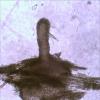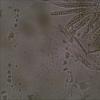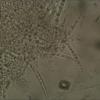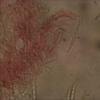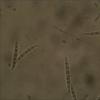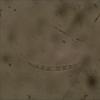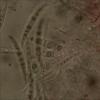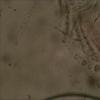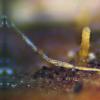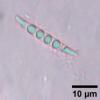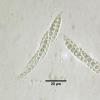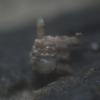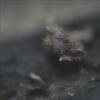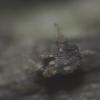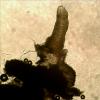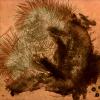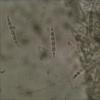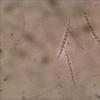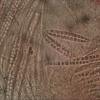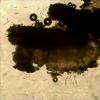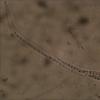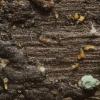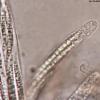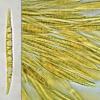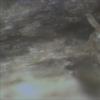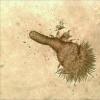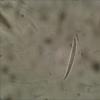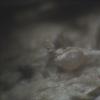
18-12-2025 17:23
 Bruno Coué
Bruno Coué
Bonjour,je serais heureux d'avoir votre avis sur c

18-12-2025 21:17
Pol DebaenstThe identification took me to Byssonectria deformi

18-12-2025 18:07
Margot en Geert VullingsThese plumes were found on rotten wood.They strong

17-12-2025 18:35
 Michel Hairaud
Michel Hairaud
Bonjour à tous/Hi to everyone I am passing along

15-12-2025 15:48
 Danny Newman
Danny Newman
Melanospora cf. lagenaria on old, rotting, fallen

15-12-2025 15:54
 Johan Boonefaes
Johan Boonefaes
Unknown anamorph found on the ground in coastal sa

15-12-2025 21:11
 Hardware Tony
Hardware Tony
Small clavate hairs, negative croziers and IKI bb

15-12-2025 07:09
 Danny Newman
Danny Newman
indet. Rutstroemiaceae sp. on unk. fallen leavesMc

Found on wood.
Fruitbody hyaline; coloured light yellow in the lower half and covered with hyhaline hairs when mature (photos 3&5)
Asci: not found
Spores: 33-37.5x3.5-4.0 um; 5 septa; containing drops

the wood was quite wet, I presume? This is a Pseudohalonectria and the large ones are the spores. What you show as the fruitbody is only the neck. The main fruitbody is immersed in the wood. If you dig them out or make section through the wood you will find asci as well.
Regards
Martin

Thanks Martin,
The wood was indeed very wet due to the rain I will look for the fruitbody to check for the asci.
Reading the article of Shearer it probably is P. lignicola
Joop
Hi Joop,
I agree with Martin. At first, it could be useful to show an acomata, through a vertical section. Then, we can look at hamathecium.
I don't recognize for the moment Pseudohalonectria, but it's a possibilty.
Alain

Joop

http://www.asturnatura.com/especie/pseudohalonectria-lutea.html
http://www.asturnatura.com/fotografia/setas-hongos/pseudohalonectria-lutea-shearer/7294.html
Let's see what's comming up by Joop...
Regards
Martin

Is this sufficient enough for you Martin or do you need more information?
Joop

this one is Fusarium
Regards,
Christian

Alains's comment made me unsure and I did wait for a further comment of him, since this is much more his world then mine. But he asked for a section of the ascocarp to check a hamathecium.
Anyway, the spores in your find do look much more acuminate as the published spores of Pseudohalonectria, where the ends are more rounded. Yours are similar to a collection by me years ago (attached). This was not submersed but very wet wood as in your case I think.
Maybe it is something else in the Magnaporthaceae or elsewhere?
best regards
Martin
Hi all,
Last photos of Joop show two kinds of spores : first one acuminate which can't be Pseudohalonectria's one, you're right Martin, it was my idea too, they are conidiospores and Christian identifies them. But we can see second ones : the ascospores, hyaline, multiseptate, fusiform. To describe more asci would be useful. Perhaps these two kinds of spores are independent.
Your macrophoto shows well ascomata, good photo Joop. Now I have no idea and no time but perhaps someone could recognize it.
Alain

Thanks very much all for your information.
I did put in another species I found today in a new topic maybe that one is better to identify.
I will have a look if I can find a new one for more info.
Joop
Thanks to you Joop. A such research is interesting for everybody.
Alain

Hello Martin,
I do think Martin the 2 spores are different, today I found 3 more species and the length and width of the ascospores do have a different range. But it is also possible that these drops of the ascospores merge to one within the boundary of their septa.
Spores near the neck: 31.5-37x3.5-4.0 um; with 4 large oil drops and 5 septa.
Ascospores: 41.5-45x3.5-4.5 um; with 9 large oil drops the number of septa could not be observed.
Photo-3&4 shows a young dark brown ascomata with neck attached to the neck of the bigger one, no spores found
Asci still have 8 spores that are clustered in 2 bundles of 4 ascospores. The bundles are shown in photo-9.
The asci are normally shorter than shown, what shows is the ascus with the bundles photo-8. On photo-09 tops of these asci are sticking out of the bottom of the ascomata. Size of these asci: 120-130x10.5-11.5 um.
When pressure on the deck glass is increased the asci extend in length as shown in photo-10. The size of this ascus is 160x11.5 um and the top bundle is still there.
The ascomata of this species is white in contrast with the other species with a long neck I found having a black ascomata and totally different ascospores.

the description of Réblová&Seifert of Conioscyphascus varius doesn't make me finally happy. The neck of the ascocarps is very short and the lenght-width ratio of the spores seems to be wider. But this seems to be the right corner to look after our fungi in question. Thanks!
Regards
Martin

Not to my knowledge Björn.
Thanks for the info, do you have an idea what the name is of the species I found in the topic of 27/11. Has the same kind of neck but a black ascomata and totally different ascospores.
Joop

I have the luck to had studied several collections from both Conioscyphascus-species from The Netherlands (a collaboration with Eduard Osiek). Both species seem to be variable in spore size, as also in the shape of ascomata (perithecial neck, even perithecia size).
We came to the conclusion that all the collections < 40µm belong to C. gracilis, and all others to C. varius, which has probably two appearances (C. varius with short spores around 38-46µm, and a C. varius with long spores around 45-52µm).
If the average length of the spores is over 40µm, I am quite sure that this collection here is C. varius.
regards,
björn

in both of our collections spore length is below 38 µm. So it is C. gracilis?
Regards
Martin


My résumé is: next time I find this, I know what to look upon... ;-)
Best regards
Martin

Hello Martin and Björn,
I will look if I can find another species today and measure a lot of spores.
Joop

Regards. Björn

after Melbourne it is now Conioscypha:
http://www.sciencedirect.com/science/article/pii/S1340354014000898
since the anamorph has the older name.
regards
Martin


I see what I can do for you Björn, today I found them again together with two other species with ascomata embedded in the dung. Maybe I can provide you with all three species.
Spore measurement for Conioscypha:
42,5-48x3.0-4.0 um. According to the article Martin mentioned it can only be C. varius because of its long neck and spore size >35 um according to the key.
One of the other species also has a long neck but different kind of spores I posted the topic on the 27th of november. No response so no name yet.
For the second one I will start a new topic it has a very small neck.
Number of septa in ascospores is 5.
The last two photos show that the ascomata has a more oval shape (401x301 um)
Joop

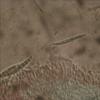
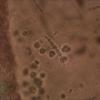
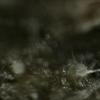
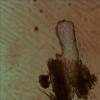
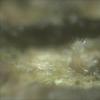
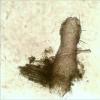
 pseudohalonectria-0001.pdf
pseudohalonectria-0001.pdf